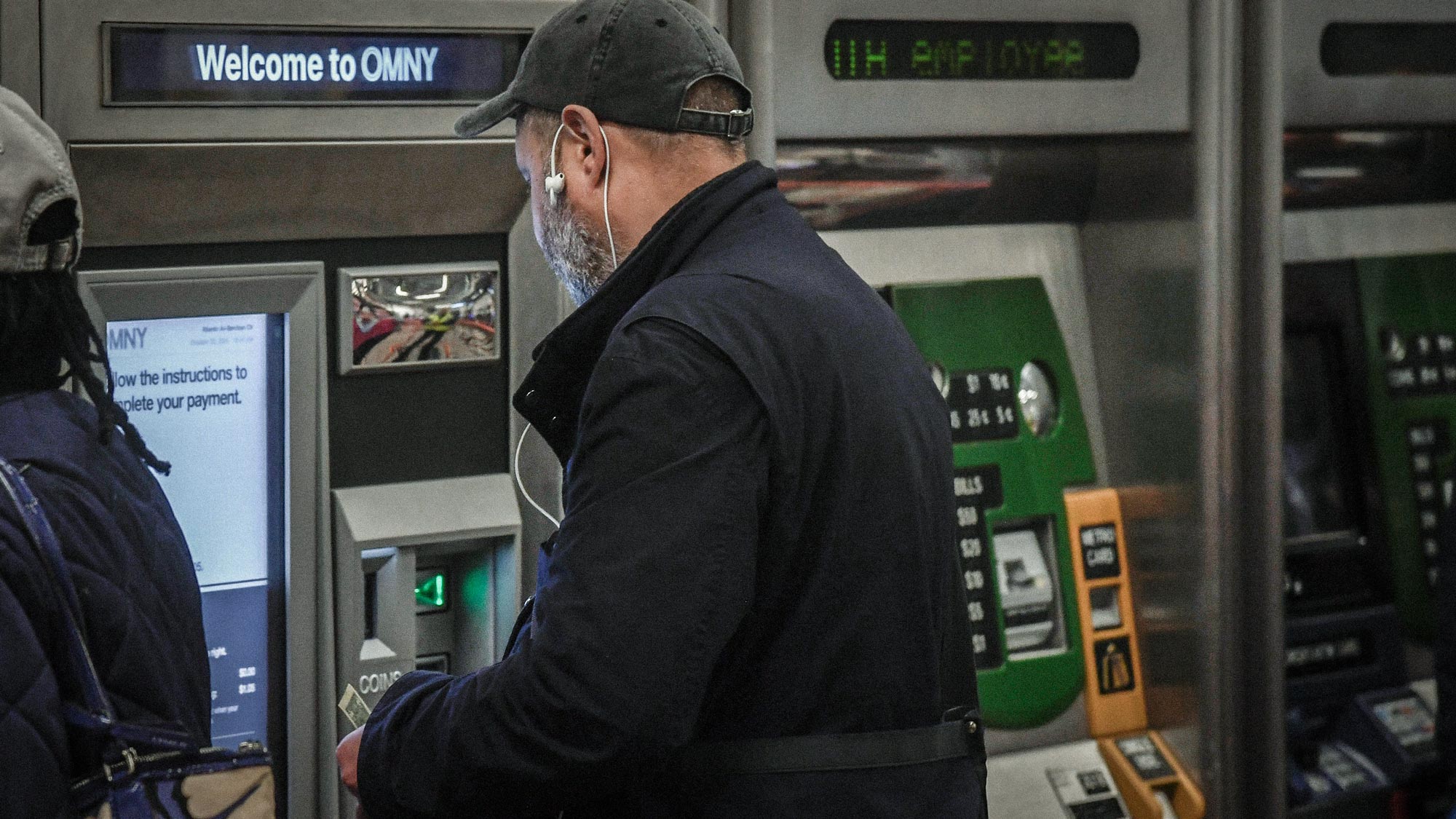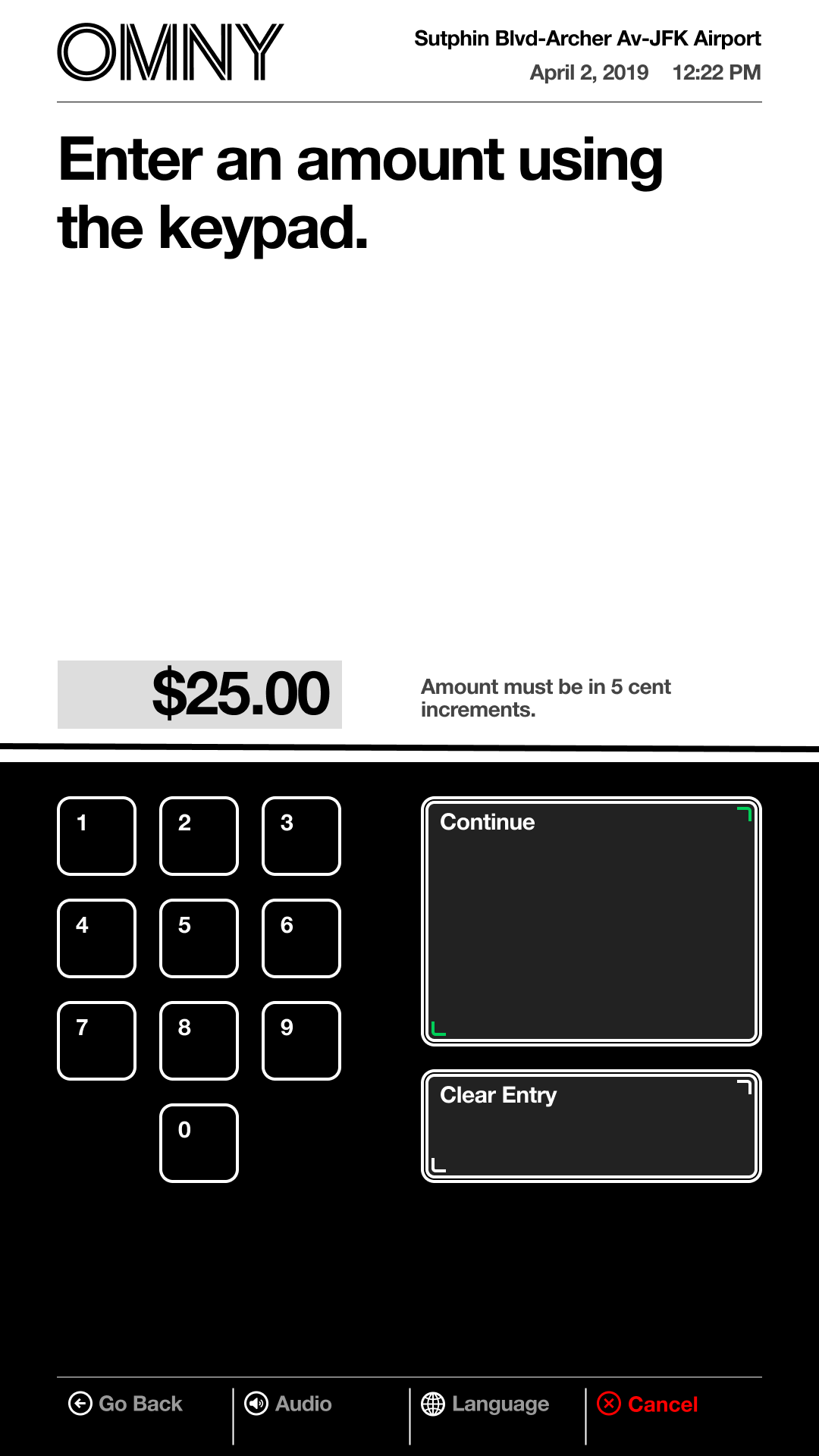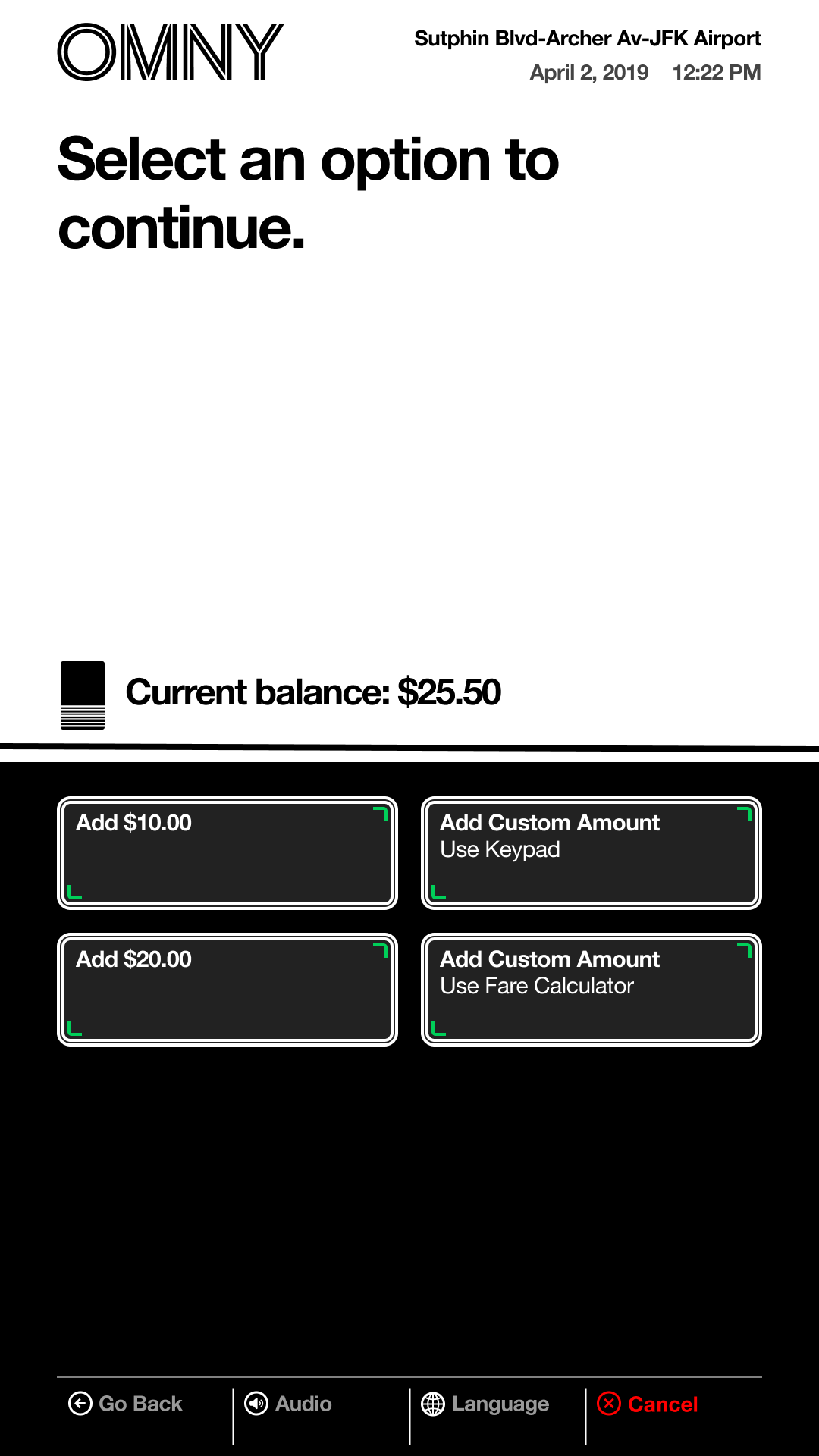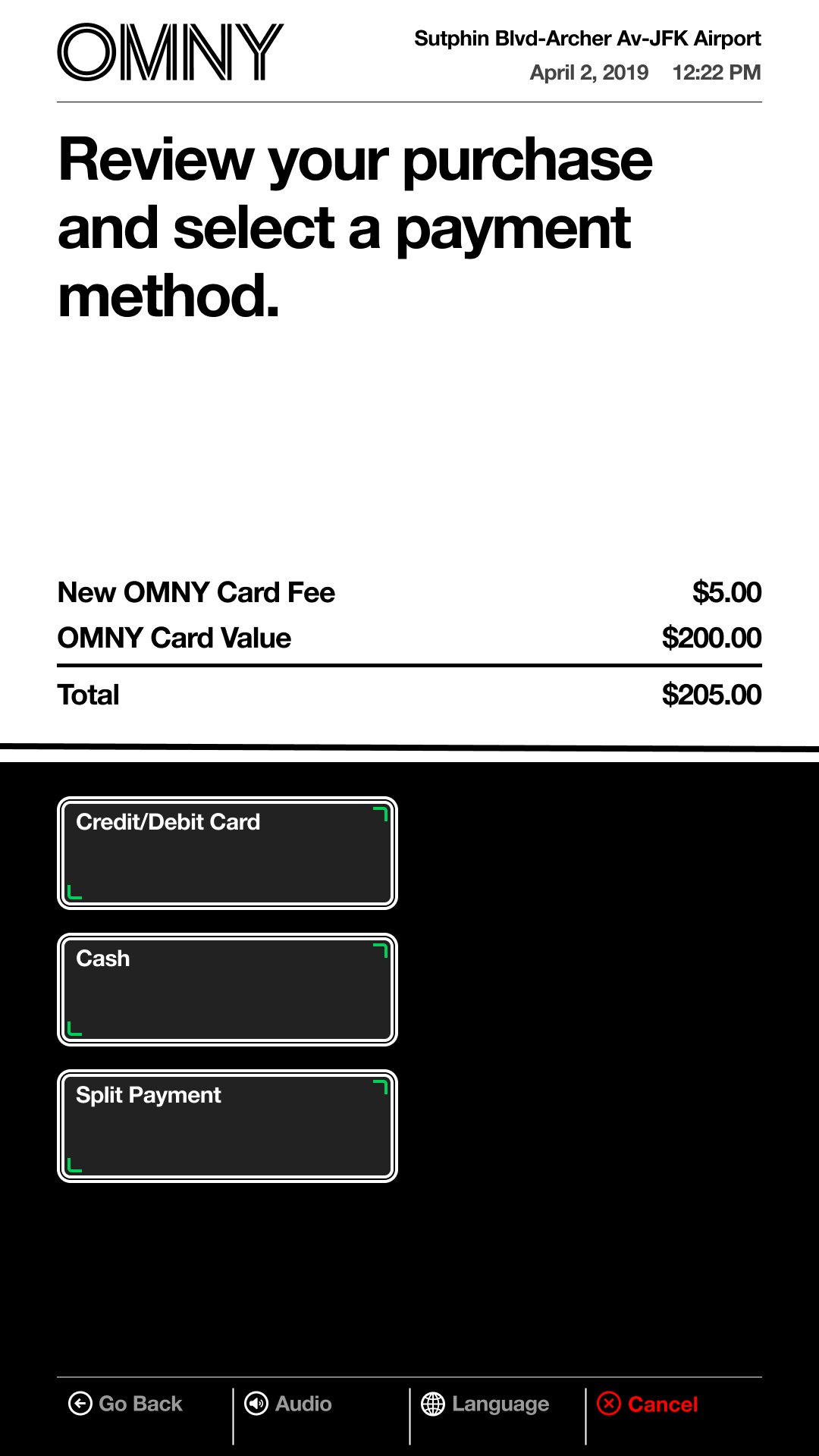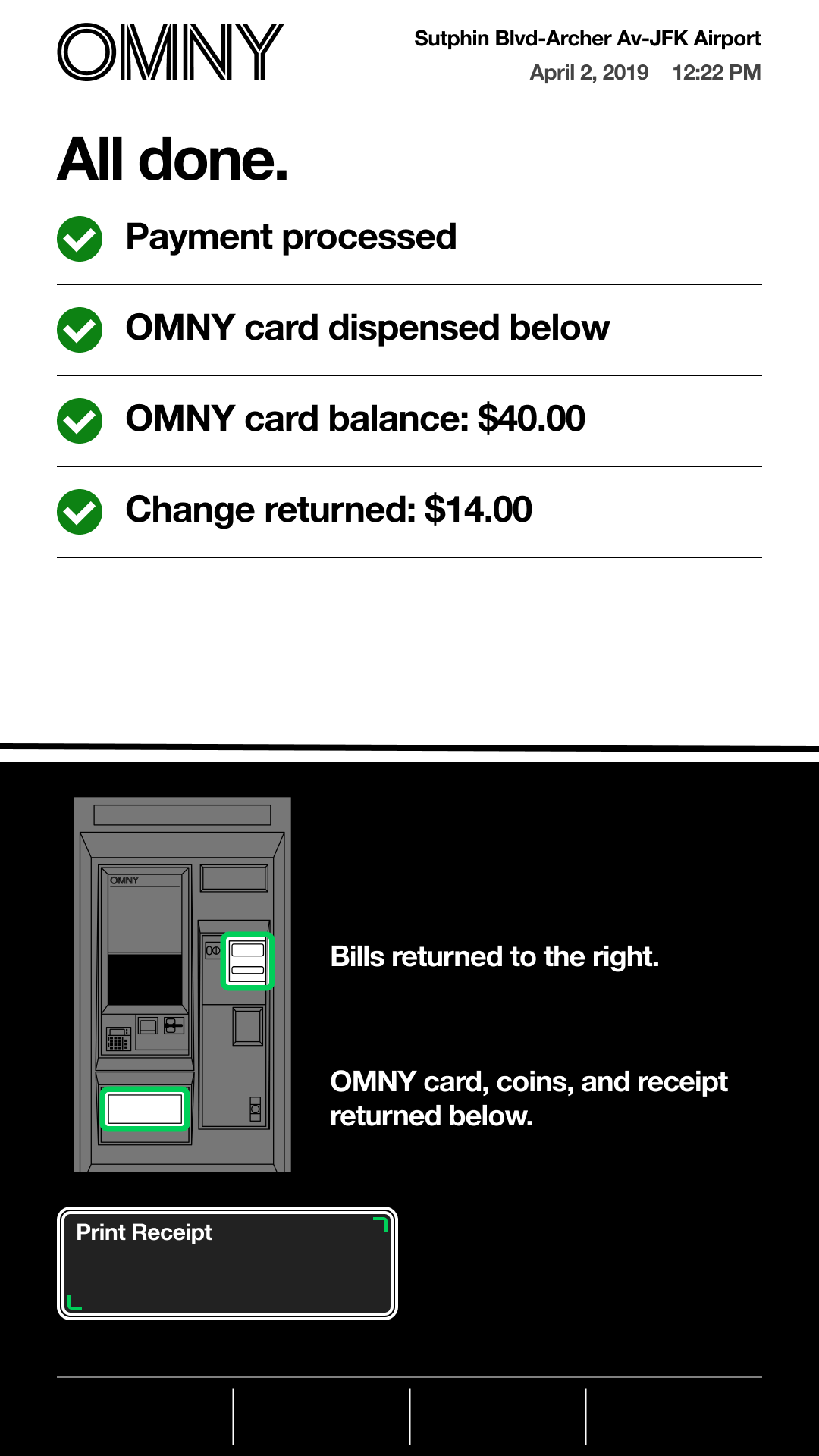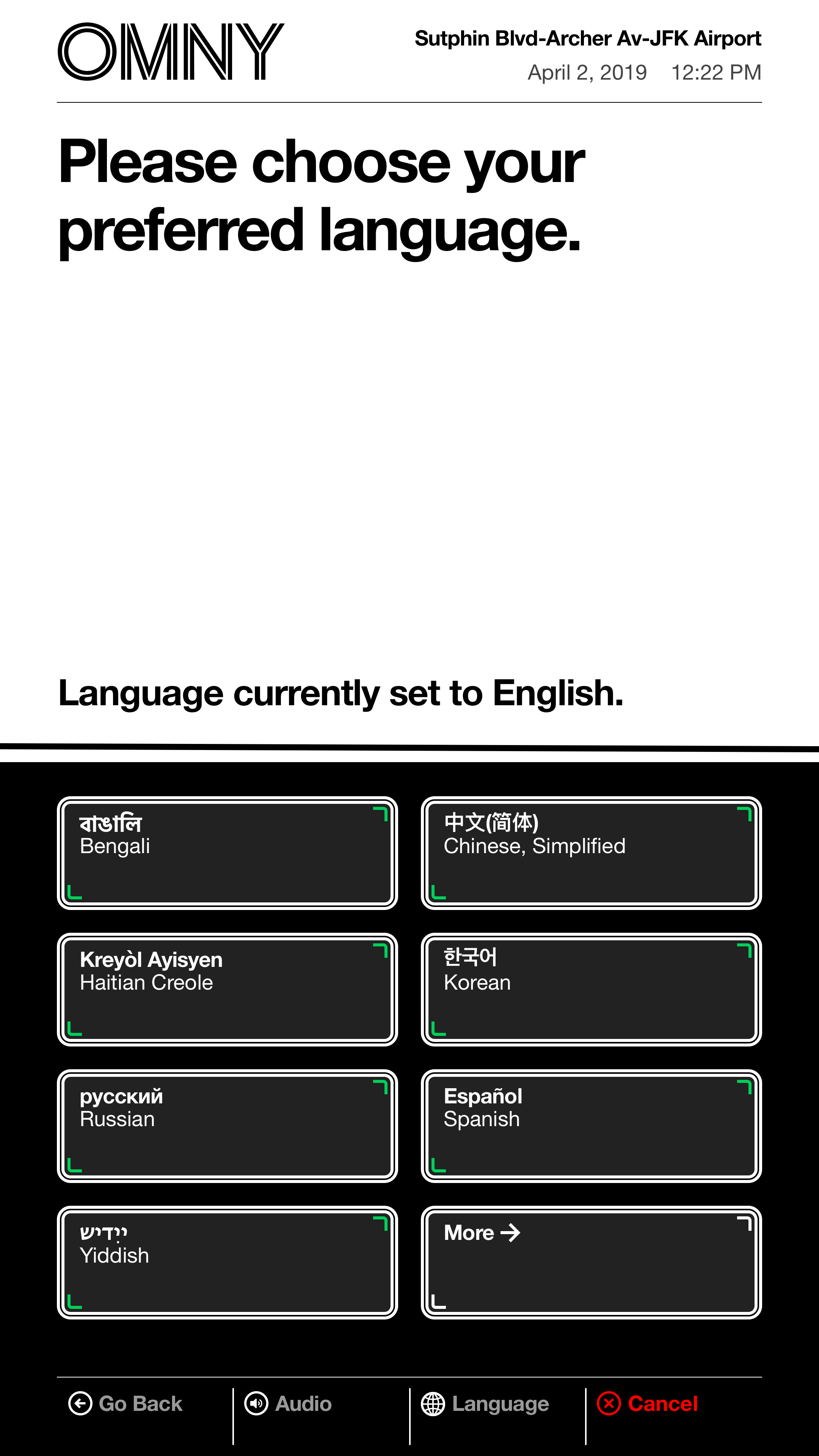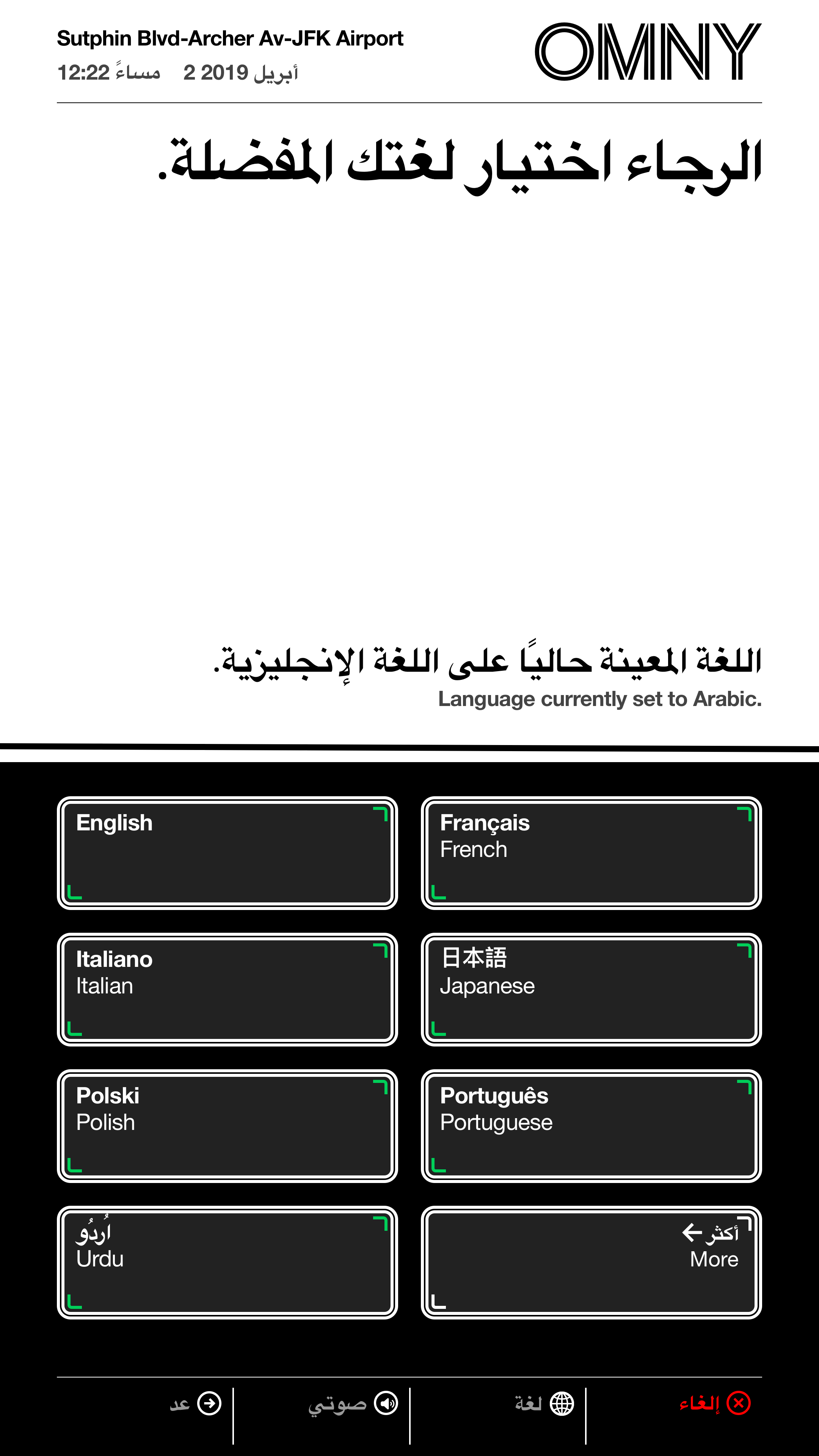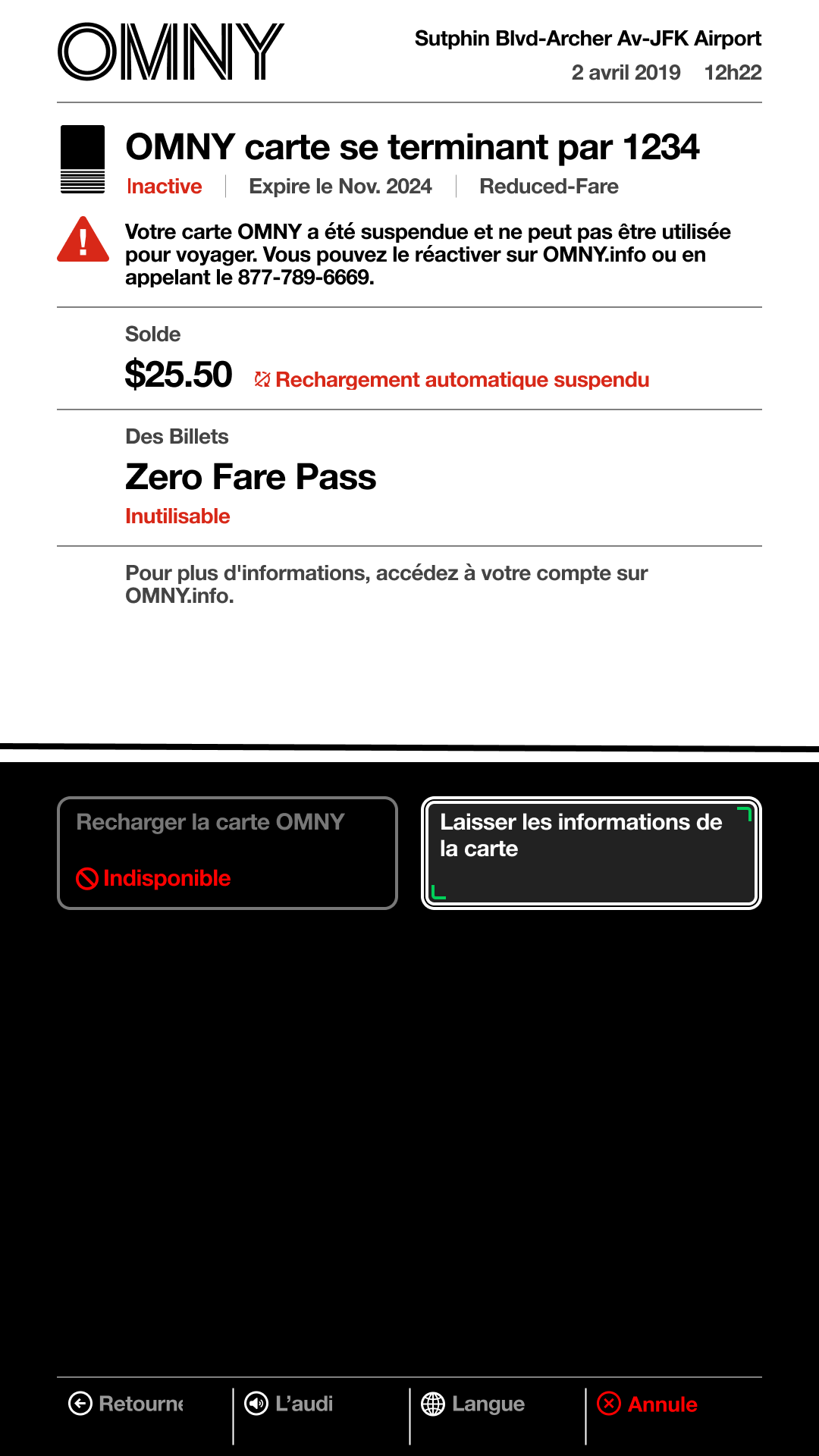Yes! I’m open and accepting
new work.
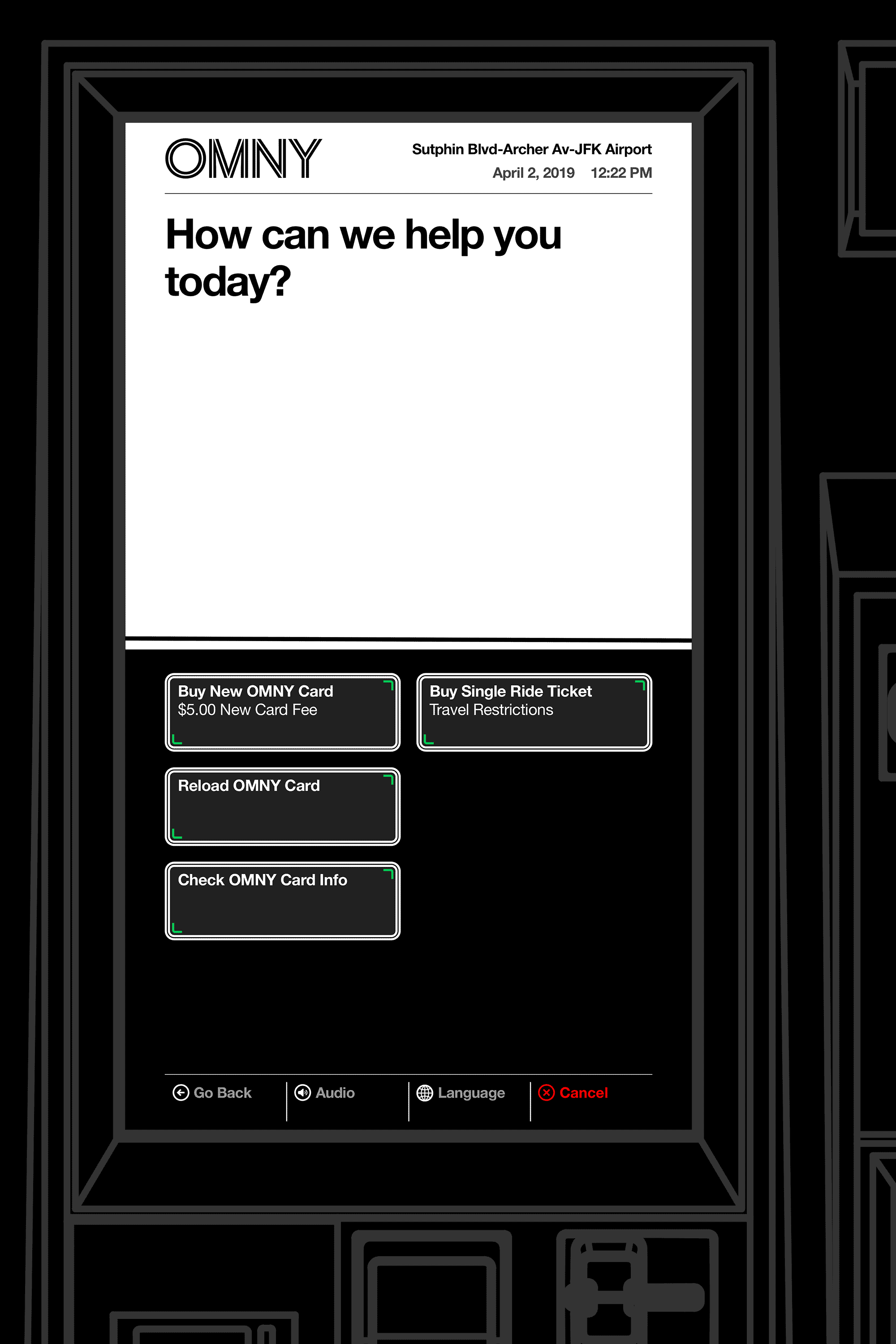
OMNY Vending Machine
Designing a branded interface for OMNY's in-person retail experience
In 2023, MTA rolled out new vending machines to serve their customers, replacing existing MetroCard vending machines in stations. I designed the digital interface for these machines, focusing on ease of use, accessibility, and anticipating future interface needs.
Focused on Transactions

The OMNY vending machine interface is designed to promote easy and efficient transactions and to serve as a major branded touchpoint alongside the full-featured OMNY website and single-action gate validators. Vending machine buttons are emphasized to be easy to press with a reliance on backend software to hide any options that aren’t relevant rather than disabling buttons and complicating the interface.
The footer of utility buttons is available on every screen, and as long as the backend software permits, the customer can use these buttons to go back, enter audio mode, switch languages, or cancel their transaction.

In designing this system, the number of screens, the typical number of times the customer would press a button, the clarity of the decision being made at each point in the transaction, and the clarity of text within each interactive element were all considered and balanced against each other. to promote transactions which could be completed as quickly as possible.
Integrated Interface
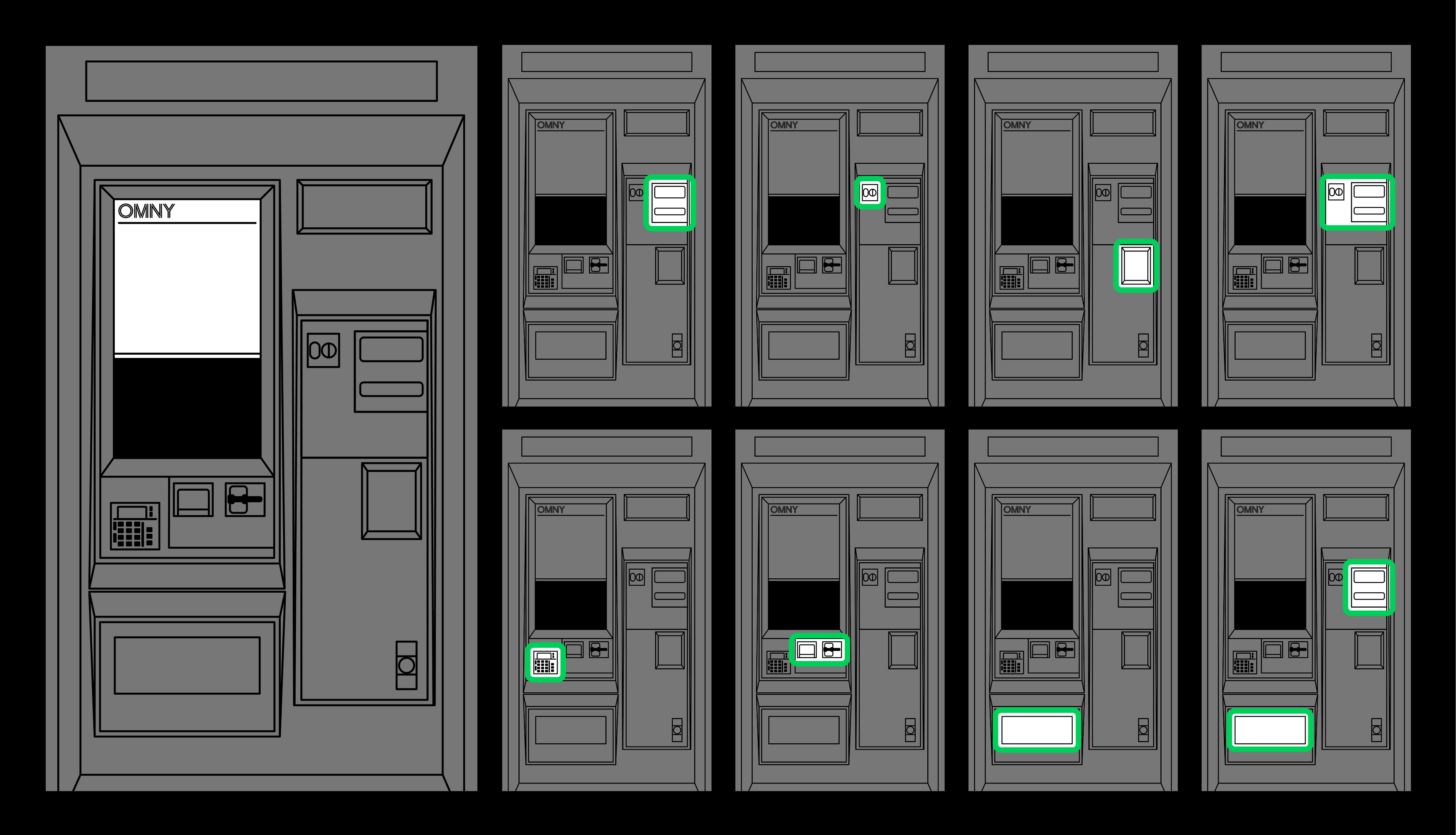
The vending machine hardware specifications, ranging from the placement and dimensions of the touchscreen to the assorted input and output components and the number of buttons on the hardware keypad are foundational elements which dictate the visual and UX design of the interface. The design system for this device is reliant on text, all of which is rendered in the Helvetica Neue bold that the New York transit system is so well known for. Text size is as large as possible while accounting for anticipated content as well as the range of languages the vending machines support.
Empowering Customers Through Contextual Design
At every step, the interface design presents contextual information to the customer specifically to help them make decisions about their transaction. The customer may review information about their card status and current load, in order to best choose what to purchase in this transaction. Monetary costs associated with choices are calculated by the device and proactively presented. At key points in the transaction, previous choices are presented back to them to present a step-by-step record of their decisions. The interface is designed to guide customers through payment step-by-step, no matter how they choose to pay. When the vending machine needs a moment to process a decision, a processing indicator should appear. If an error occurs, the error is communicated clearly to the user and if there are options for them to correct or avoid the error, whether by choosing a different decision path or interacting with a component of the hardware, those remedies are clearly and simply presented. At the end of their transaction, a final screen is designed to show them the results of that transaction dynamically as the vending machine completes them.
Customer privacy was also a consideration, and transaction data presented on screen is placed discretely and only where needed.
Designing for Accessibility and Language Support
New York City is the most populous city in the United States, the most linguistically diverse city in the world, and attracts millions of visitors each year. In order to succeed, OMNY vending machines and their interface must be usable by a huge number of people who speak and read different languages, have different sensory and mobility capabilities, and a range of technical ability.


Selections from the OMNY vending machine styleguide
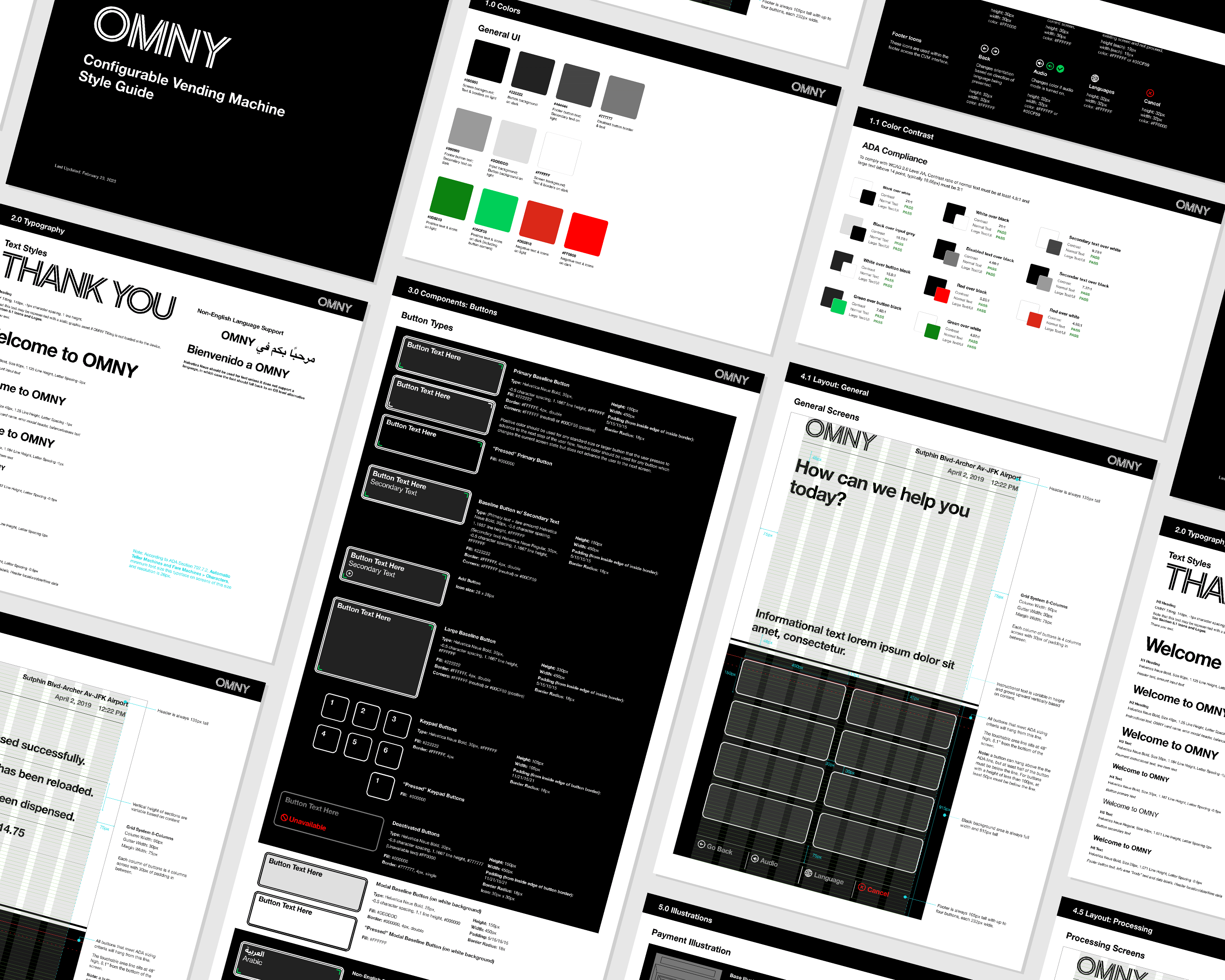
OMNY branding by Pentagram.
OMNY vending machine hardware designed by Billings Jackson Design.
Overall OMNY lead designer for Reflexions was Debra Ohayon, while I acted as lead designer specifically for the vending machine interface. Design support provided by Xochitl Lozano.
